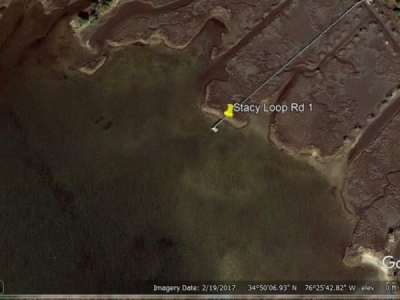
Posted on November 12, 2020
BEAUFORT — A local environmental group and a state agency have been awarded state grants for restoration projects in Carteret County.
The office of N.C. Attorney General Josh Stein announced Oct. 26 nearly $3 million in Environmental Enhancement Grants awarded to 22 grantees around North Carolina. Among the recipients are the N.C. Coastal Federation – a Carteret County-based nonprofit dedicated to the conservation and restoration of the state’s coastal environment – and the N.C. Division of Soil and Water Conservation.
The federation and the division will use the grants to fund projects within the county. The NCCF has been awarded $185,653 for a water access restoration project, while the division has been awarded $208,000 for stream and marsh sill restoration and living shoreline construction in Carteret and Hyde counties.
NCCF coastal scientist and central regional manager Dr. Lexia Weaver said the federation is partnering with county officials on its project. According to the attorney general’s office, the project includes restoring 850 feet of living shoreline on Bogue Sound, as well as 0.6 acres of salt marsh.
“The proposed living shoreline will be located at the side of Carteret County’s newest soundfront open space acquisition in the western part of Carteret County,” Dr. Weaver said. “Design and permitting will begin in early 2021, with construction occurring in late 2021.”
According to a recent announcement from the federation, the project site is a 76-acre tract the federation purchased in March. The federation turned over 66 acres to the county to create a public water access, and 850 linear feet of living shoreline will be built to restore over one-half an acre of salt marsh to reduce erosion, improve water quality and create fish habitat.
The remaining 10 acres will be the future site of the NCCF Center for Coastal Protection and Restoration, “where hands-on environmental education and restoration will improve public understanding of our valuable coast,” according to the federation.
As of last week, the EEG is the only outside funding source the federation has for this project. However, Dr. Weaver said they’ve submitted a letter of intent to the Honda Marine Science foundation, as well.
“If accepted, we’ll be submitting a full proposal (to the foundation) that will also help support this living shoreline,” she said.
Dr. Weaver said in the federation’s announcement they’re thrilled to receive the enhancement grant.
“We’re eager to work with Carteret County to protect this shoreline from future erosion while creating habitat that will provide more fish and shellfish,” she said. “The living shoreline will demonstrate a more effective, economical and long-term technique to protect shorelines from erosion when compared to bulkheads and seawalls.”
Meanwhile, much of the $208,000 the DSWC received will go for projects to restore streams and marsh and construct living shorelines in the Stacy area Down East and the Bogue area in western Carteret County.
Tom Hill, senior environmental specialist in the agency’s Raleigh office, said Friday the state will work with private property owners, experts in the county soil and water conservation office and the NCCF on the projects.
They’re designed to protect and enhance water quality, slow shoreline erosion and create marine habitat along waters that are open to shellfish harvesting, designated by the state Division of Marine Fisheries as primary nursery areas and designated by the state as Outstanding Resource Waters, the highest classification.
The Down East project is in the Nelson’s Bay-Core Sound area, while the Bogue area project is at the confluence of Broad Creek and Bogue Sound.
In both areas, Mr. Hill said, there’s been a lot of erosion and loss of habitat, and “we’re very excited to get this money and get these projects started.” They will probably start next fall.
“We have a lot of these projects identified and we’d like to do them all, but there’s never enough money, so the funds from the Attorney General’s office are very welcome,” he added.
“These projects will be very beneficial,” Mr. Hill said, not just to the property owners in terms of preventing erosion, but also to the shellfish industry because they’ll protect some of the best waters in the area and create new shellfish habitat.
The state office works with the local soil and water office and the coastal federation to identify potential project sites, then ranks them and tries to fund the top priorities.
“It’s a real team effort” to identify them and actually get the work done, Mr. Hill said.
Todd Kelly of the county office will be the lead for the projects.
It will take some time to get the necessary state Coastal Area Management Act permits to do the work, and to work with the property owners on details. Then the planting will have to be timed to take advantage of the best growing conditions.
Contact Brad Rich at 252-864-1532; email Brad@thenewstimes.com; or follow on Twitter @brichccnt.
Contact Mike Shutak at 252-723-7353, email mike@thenewstimes.com; or follow on Twitter at @mikesccnt.
Source: carolinacoastonline





